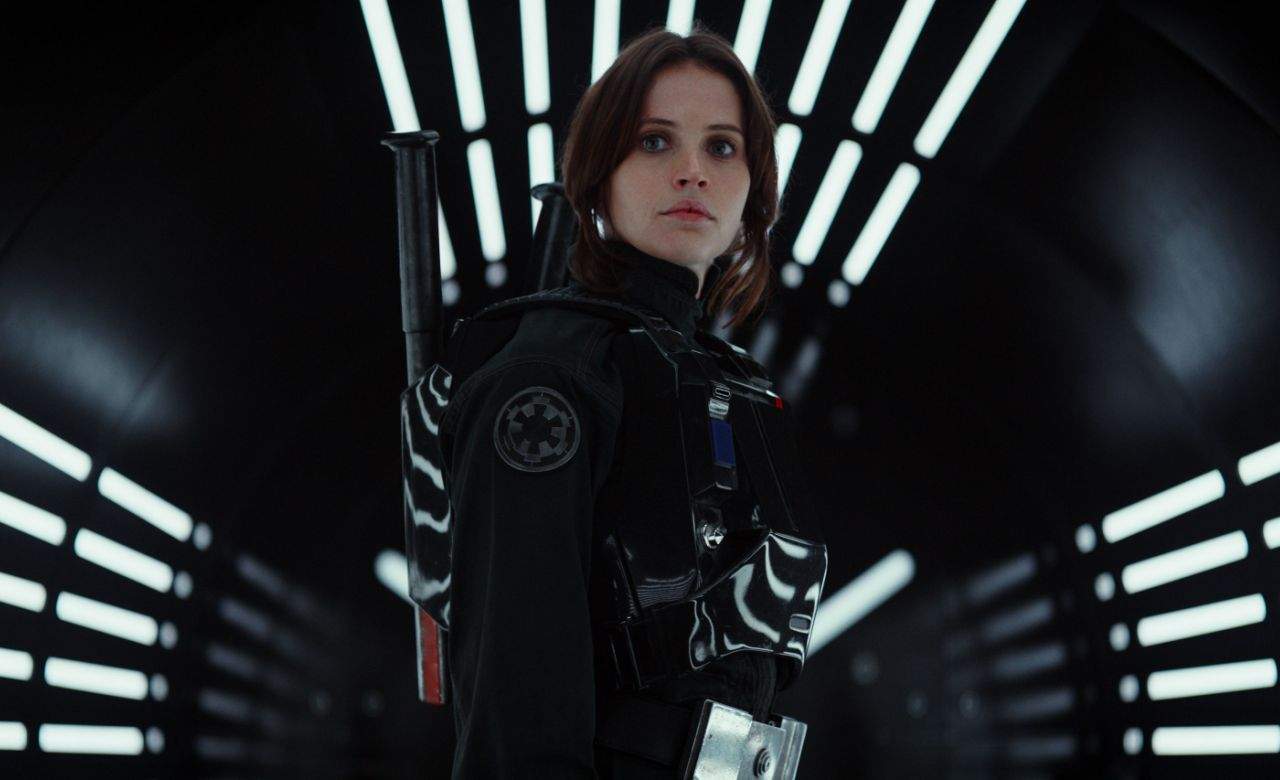Rogue One: A Star Wars Story
The first in a long list of upcoming Star Wars spinoffs is packed with nostalgia and explosive action.
Overview
In the canon of Star Wars movies, there are now essentially four chapters: The Originals, The Prequels, The Sequels and The Spinoffs.
The Originals (Episodes IV-VI) are, and perhaps always will be, the best of the bunch; a genre-defining, special-effects revolutionizing space saga of such epic proportions they remain, to this day, some of the most spectacular blockbusters ever made.
The Prequels (Episodes I-III) are, and hopefully always will be, the worst of the bunch; a childish, CGI-heavy money spinner that played more like hastily written video games than films worthy of their iconic opening credits and characters.
The Sequels (Episode VI-IX) are only one film in (with the second now in post-production), but it's safe to say The Force Awakens gave us exactly what we needed; a thrilling if rather familiar-feeling reboot with a talented, multi-dimensional and engaging new trio of stars to pick up where Luke, Han and Leia left off.
That brings us to The Spinoffs, beginning with Rogue One and soon to include the untitled Han Solo origin story. In a way, while it's not given its own Roman numeral, Rogue One is a sort of Episode III-point-V – a nifty prelude to one of the most iconic please explains in cinema history: the Death Star's infamous design flaw. In Rogue One, audiences get the answer to two important questions: why the moon-size battle station had such an exploitable Achilles' heel, and how the Rebel Alliance found out about it. The former and weaker of these two revelations occupies the first two-thirds of the movie, whilst the latter gives it its much needed closing momentum.
Leading the film's magnificent ensemble is Felicity Jones as Jyn Erso, the abandoned daughter of Galen Erso (Mads Mikkelsen), a famed Imperial scientist whose work proves pivotal to both the inception and design of the Empire's new super weapon. Unfortunately, Jones's dialogue does little to showcase her ability – frankly, much of Rogue One's screenplay leaves a lot to be desired. The two big exceptions are Forest Whitaker's eccentric character Saw Gerrera, and the Alan Tudyk-voiced droid K-2SO. In particular, the latter character's deadpan honesty helps cut through the film's often overwhelming sense of gloom.
On the positive side, though, we again find in the Star Wars universe a film where gender holds zero stock as either an insult or a differentiator. Whenever a character's abilities are called into question, it's because of their experience or upbringing, not their reproductive organs, and Jyn is no exception. Alongside her, Diego Luna plays a conflicted assassin whose scenes repeatedly address the film's preoccupation with the hazy moralities of war, whilst the villain in Rogue One is a ruthless egotist named Director Krennic – played magnificently by Australia's Ben Mendelsohn.
Though the film's various additional characters are too numerous to mention, one does command further attention – although in the interest of avoiding spoilers, we won't mention them by name. Suffice it to say, Rogue One reintroduces a key figure from the original Star Wars film, and does so by digitally recreating the deceased actor's face and voicing him with an impersonator. Sadly, the momentary joy experienced upon first seeing this familiar face quickly gives way to disappointment as the CGI falls short. An ultimately needless piece of fan service, the character's depiction pulls you out of the moment with such intensity that it takes several minutes to draw you back in each time he appears. As The Force Awakens proved, a tangible, human actor will always be preferable to a computer-generated one, and actors should sleep soundly in that knowledge.
Nevertheless, Rogue One is overall an impressive and engaging exercise in nostalgia, full of delightful nods to the original trilogy. The movie's pacing, especially at the beginning, feels well off, jumping from character to character and location to location with surprising clumsiness. Fortunately, spectacular action sequences largely make up for this issue, most notably the climactic final battle and the scenes showcasing the Death Star's destructive capabilities – which even on their lowest power setting prove legitimately unsettling. Many Bothans may have died to bring us word of Death Star 2.0, but now, at long last, we can give names to those who did the same for the original – and it's definitely worth the price of admission.






